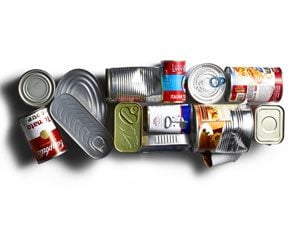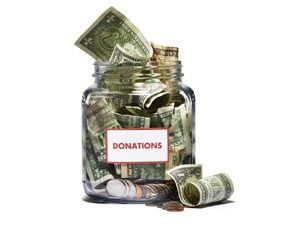How to Donate Food So It Won’t Go to Waste
Updated: May 23, 2022
Giving is good, but giving smart is better. Once homeless and hungry, writer Deb Martinson tells us how to donate goods so we make the most impact.

Traditionally, those of us who give to food banks will clean out our cabinets and drop off the rejects. As a formerly homeless person, I’d like to ask you to try something different this year: Give like a hungry person. If all your meals for the next week were coming from a donation box, what would you put in there? Here are a few suggestions:
1. Don’t give outlandish things
I once received a tub of candied fruitcake fruit from a food bank. When I ran out of everything else and ate some, I thought, I am so poor, I’ve been reduced to eating other people’s rejects. Some food is just too horrible to wish on anyone else; throw it out instead.
2. Do give no-cook foods
When I was homeless, I didn’t carry my microwave around. Others have a hard time cooking if their landlord won’t fix the broken stove or if the power company shut off the electricity. So give granola bars, crackers, Spam, tuna, peanut butter, dry milk—anything you’d take on a long hike.
3. Leave food in the original packaging
If it needs to be portioned out, volunteers at the food bank will take care of it.
4. Think simple
A boxed cake that says Just add water is better than one that requires milk, eggs, vegetable oil, and whatever else. Instant coffee is great; ground coffee less so. Also good are multitaskers—Bisquick rocks.

5. Label special dietary needs
People with food allergies or celiac disease often can’t find donated food they can eat. If you donate gluten-free food, mark it GLUTEN-FREE in large print. Do the same for allergen-free items. Clear labeling will help get the right food to the right clients. Proceeds from these holiday gifts go towards a good cause.
6. Make it easy to open
Aseptic—or sterile—packaging and pouches are better than pull-top cans, which are better than traditional cans. It sucks even more than usual to be hungry if you’ve got a perfectly good can of food and no way to get the thing open. And avoid glass jars—they break too easily.
7. Ask what’s needed
The food bank may want non-food items, like soap, toilet paper, tampons and pads, diapers, and pet food, because these can’t be purchased with food stamps. I never would have guessed the food bank near my house needs plastic bags.
8. Check your grocery store
Many stores work with local food pantries to assemble bags of food you can buy and donate for five or ten bucks. It’s an easy way to give.
9. Be nice
I still remember how finding cookies in my bag could make me happy all day. When you’re poor, small things take on more significance. Try to include at least one item you’d choose as a treat for your kids. Someone else’s kids will love you. If you’re looking to donate to charity, your donations will make the biggest impact at these organizations.
10. Consider donating cash
Large organizations can get much better deals on food than you can. With $10, Feeding America (feedingamerica.org) can provide 90 meals to hungry people.
Of course, the important thing is to do what you can. Giving food to hungry people is awesome, and I love you for it no matter what you donate (unless it’s candied fruitcake fruit).